It is hard to think of Tarzan without thinking
of one's own childhood. Yet that immortal myth of the abandoned child of
civilization who survives to become Lord of the Jungle was not written
for children at all -- as I keep explaining to my 9-year-old son whenever
he snatches from my desk the volume I am currently reading. "Look," I tell
him, "the only two books Burroughs ever deliberately wrote for kids are
lousy. Stupid. And besides," I add, "your teen-age brother and your mother
are next in line after me. Then you." But in some sense he has the prior
claim. Certainly I was his age when I began the series, and I am his age
still when I return to it now. Or rather, I realize returning to it that,
at my deepest level of response. I have remained faithful to the dream
which moved me then.
It has been a long time, however, since I last dreamed
the dream all the way through -- near tears as I finished the last
volume, though I knew I would always begin again. And, again and again.
And again. Not that the Lord of the Jungle has ever completely disappeared
from my life; but for many years I have encountered him chiefly in comics
and movies, on radio -- and especially in those old films endlessly replayed
on Sunday morning television. Tarzan between commercials. Tarzan as Johnny
Weissmuller and Buster Crabbe. And however such versions may falsify details
of the original text, they cannot betray the myth, which like all authentic
myths has passed into the public domain, and must be re-embodied in whatever
vulgar commercial form has preempted the popular imagination.
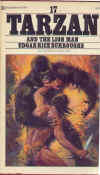
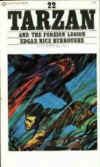
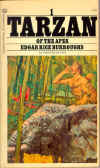
How could Burroughs, who died reading Sunday comics, have
objected? True, in Tarzan
and the Lion Man, which appeared in 1934, he satirized what Hollywood
had made of his creation, showing in a final scene his hero being rejected
as "not the type" to play himself. But in Tarzan
and 'The Foreign Legion', published 13 years later, he puts into
the mouth of a sympathetic character, confronted with the actual Ape Man,
the words, "Is dat Johnny Weissmuller?" It is Burroughs's own last word
on the subject, his final irony, directed this time not at the moviemakers
but his own belief that the myth he created belonged solely to him.
From the start, I believed it belonged to me, a small
Jewish boy in Newark, N.J. appalled at the greyness of the urban world
between the two Great Wars. It was a Green World I needed to dream of but
not a pastoral or Arcadian one, which iws to say, a world unremittingly
green. No, it was a a Darwinian world, one green in leaf, but red in fang
and claw that the times and I demanded. And this Burroughs provided, aware
somehow that, though in his own heyday, the jurors at the Scopes Trial
may have voted against evolution, the mass audience had decided otherwise.
In the cities at least, Burroughs's Chicago, my Newark, no one could doubt
the Struggle for Existence, the Survival of the Fittest, the bloody triumph
of homo sapiens over the lesser beasts.
It is this triumph which Burroughs celebrates in the tale
of Tarzan, making him the first Wild Man Savior to have been suckled by
a she-ape rather than a she-wolf. The latter had fostered mythic heroes
form the Romulus and Remus to the Mowgli of Kipling's "The Jungle Books"'
but "On the Origin of Species" had persuaded Burroughs that apes are our
closest kin. And the popular imagination had transformed them into our
actual progenitors, twisting classical evolutionary theory just enough
to suggest that our remotest ancestors have survived, and can be seen,
in the nearest zoo. Or better still, in their native habitat, the living
past of "Africa." Taking his myth for a fact, literal-minded readers are
appaled by the mistakes Burroughs makes about the Dark Continent -- especially
about its fauna, or the languages spoken by its natives. But it is merely
a convenient name for the absolute Elsewhere, where the pop Darwinian Jungle
shelters Indian Tigers and African Lions side by side. And Burroughs relocated
it, when he was so moved, in Sumatra, for instance, or the "Island of Uxmal,"
or the Center of the Earth: the imaginary womb of the Great Mother civilization
has in fact sullied and raped.
Darwin alone, howerver, could not teach Burroughs to convert
science to myth. This he learned from other tellers of tales, like Jack
London and Kipling, for whom he has registered his admiration and
gratitude. But a third great popular myth-maker, H. Rider Haggard, whom
he does not mention, seems to me equally important for him. It was Haggard
who first suggested the notion that in the preserved past of "Africa,"
a castaway from the present could experience not only the victory of man
over the beasts, but also the encounter of the male with the mystery of
woman, the invention of eros.
Again and again, in the midst of human sacrifice, torture
and the eating of raw flesh, Tarzan confronts erotically potent, unredeemably
exotic and invariably naked females. As divine and mythic as he, they offer
to yield up their divinity for his love, striving to win him with caresses
and the threat of death. But always, of course, in vain. And the prototype
of them all is La of Opar, whom Tarzan rejects like the rest, but returns
to over and over -- in quest not only of the treasure of the guards, but
also the renewal of their endless flirtation. But La is clearly of H. Rider
Haggard's "She," a pop masterpiece as universally appealing (among its
admirers are Carl Jung, Henry Miller, D. H. Lawrence and Andre Lang) as
Tarzan of the Apes.
The infamous schoolteacher of Downey Calif. was, therefore, right when,,
in 1961, she removed two volumes of Tarzan from her library shelves as
"pornographic" -- wrong in particular (she thought Tarzan had never married
Jane), but right in general. And Philip
Jose Farmer, greatest living authority on Burroughs, was even more
right when, in a porno-travesty called "A Feast Unknown," he revealed the
sado-masochistic and homosexual aspects of Tarzan's eros.
As a boy, however, I scarcely noticed the erotic episodes,
skipping ahead impatiently, as my 9-year-old does now, whenever some languorous
charmer appeared. Yet Burroughs, I have learned since, thought of himself
as a "dirty writer," refusing, for instance to dictate aloud to his secretary,
as was his custom, passages he felt to be too titillating. To be sure,
he uses only the chestiest language, and never describes the sec act at
all. Even the consummation of Tarzan's marriage occurs off-scene, though
he does render in detail the two occasions on which Jane almost yields
to the Ape-man before they are duly wed. And perhaps the sultriest scene
he ever wrote is in Tarzan
and the Golden Lion, in which she is stopped at the last possible
moment from making love to one of the three false Tarzans, who throughout
the series so oddly undercut the credibility of the hero.
Resisted seduction and failed rape; these are for Burroughs
the paradigms of passion. And rape is more central than seduction. Few
rapes are ever consummated in his books but the unconsummated variety occurs
with an astonishing frequency. One industrious critic has counted 76 rapes
in the books Burroughs wrote in the first four years of his career and
time did not slow down his pace. Indeed, "good women" exist in his fiction
almost entirely to be threatened with violation and rescued. Jane is, of
course, the target-in-chief, desired on sight by all males of the "lesser
breeds": great apes, gorillas, black cannibals, Russians, Germans, Lascars,
Japanese. And worst among them are the Kings and High Priests, those Bad
Fathers, whose frustrated passion and eventual destruction Burroughs especially
delights in imagining.
After a while, Burroughs seems to grow weary of Jane,
whom, it would appear, he had never really wanted Tarzan to marry. His
first volume ends in fact with Tarzan's rejection of her. And though his
editors persuaded Burroughs to give her another chance, he keeps the pair
separated for ever longer periods; perhaps because he senses dimly that
his Forest God should have remained forever virgin. For a while, he relishes
portraying her in the arms of some frustrated bestial attacker, but even
this runs out.
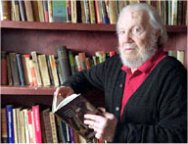 Leslie
Aaron Fiedler (March 8, 1917 – January 29, 2003) was a Jewish-American
literary critic, known for his interest in mythography and his championing
of genre fiction.
Leslie
Aaron Fiedler (March 8, 1917 – January 29, 2003) was a Jewish-American
literary critic, known for his interest in mythography and his championing
of genre fiction.
His work also involves application of psychological theories
to American literature. He was in practical terms one of the early postmodernist
critics working across literature in general, from around 1970. His most
cited work is Love and Death in the American Novel (1960).
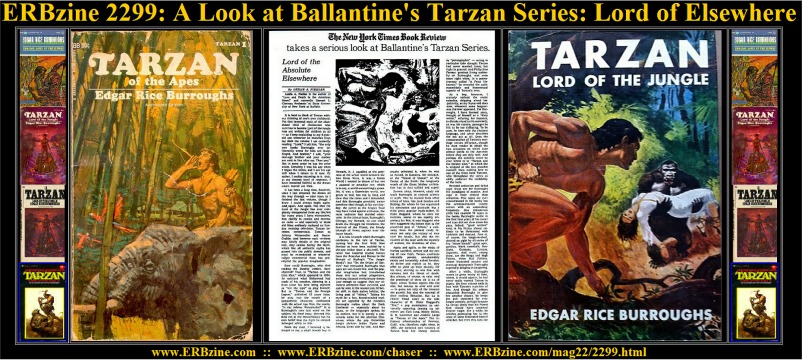


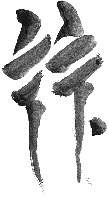

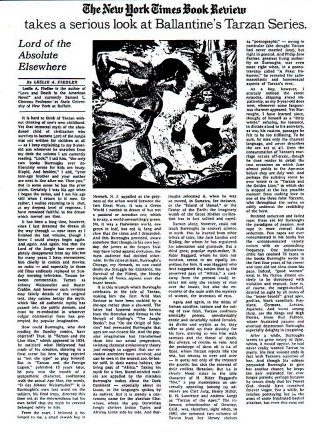
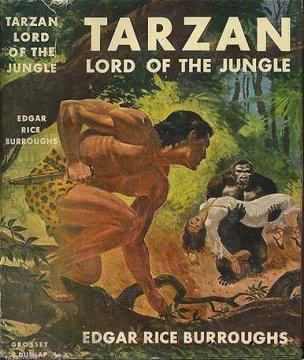



 Leslie
Aaron Fiedler (March 8, 1917 – January 29, 2003) was a Jewish-American
literary critic, known for his interest in mythography and his championing
of genre fiction.
Leslie
Aaron Fiedler (March 8, 1917 – January 29, 2003) was a Jewish-American
literary critic, known for his interest in mythography and his championing
of genre fiction.

